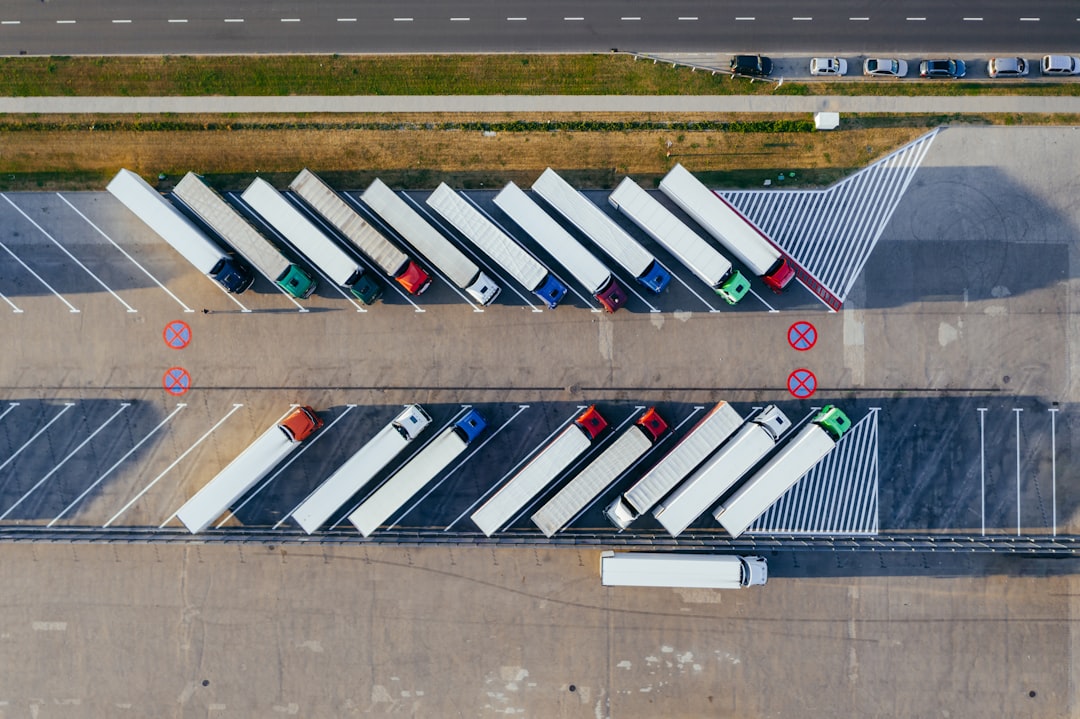A Surprising Escalation in Trade Policy (Image Credits: Unsplash)
Under the steady glow of Oval Office lamps, President Trump finalized a proclamation that’s already sparking debates across industries and borders.
A Surprising Escalation in Trade Policy
Imagine driving down a highway lined with rigs from overseas, only to see that change overnight. That’s the reality President Trump just set in motion with his latest trade move. He signed a proclamation imposing steep tariffs on imported trucks and buses, aiming to shield American manufacturers from what he calls unfair foreign competition.
This isn’t just another policy tweak. The 25% duty on medium- and heavy-duty trucks hits hard, especially for parts and fully assembled vehicles coming in from places like Mexico and Canada. Buses aren’t spared either, facing a 10% levy that could ripple through school districts and public transit systems nationwide.
Experts are buzzing about the timing. With the economy humming along, this could be Trump’s way of doubling down on his promise to bring jobs back home before the year’s end.
Breaking Down the New Duties
At the core, these tariffs target vehicles essential to daily life and commerce. Medium-duty trucks, think delivery vans and construction haulers, will see the full 25% hit starting November 1. Heavy-duty ones, like the massive semis that haul freight across states, fall under the same rate.
Buses get a lighter but still notable 10% tariff. This covers everything from yellow school buses to city transit coaches, potentially raising costs for local governments. The White House frames it as a national security issue, arguing that over-reliance on imports weakens domestic production.
To soften the blow for US builders, there’s an offset program. Manufacturers assembling trucks here can claim credits on parts tariffs, based on the value of their domestic output through 2030. It’s a carrot to go with the stick.
Why Trucks and Buses? The National Security Angle
Trump’s team points to a growing import surge that’s hurting US factories. Over the past few years, foreign-made vehicles have flooded markets, undercutting local jobs in states like Michigan and Ohio. This proclamation invokes Section 232, treating these imports as a threat to supply chains vital for defense and economy.
Consider the numbers. Imports of heavy trucks have jumped, with some models now built abroad to dodge earlier duties. By slapping on 25%, the administration hopes to level the playing field and encourage more assembly lines stateside.
Critics worry it might backfire, driving up prices for consumers and businesses. Yet supporters see it as a necessary stand, much like tariffs on steel that preceded this.
Industry Reactions: Winners and Losers Emerge
American truck makers are breathing a sigh of relief. Companies with strong US plants stand to gain from reduced competition, potentially hiring more workers as demand shifts homeward. It’s a boost for an sector already navigating supply shortages.
On the flip side, importers and fleet operators face headaches. Higher costs could mean pricier new vehicles or delays in upgrades. Public transit agencies might pass expenses to riders, squeezing budgets in an inflationary climate.
Global partners aren’t thrilled. Mexico, a key exporter, could retaliate, echoing past trade spats. Still, the offset for domestic engines and parts might ease some tensions for international firms with US operations.
Global Ripples and Trade Tensions
This move fits Trump’s broader tariff strategy, which has already targeted cars and parts. Now, with trucks and buses in the crosshairs, it completes a near-total coverage of imported vehicles. Analysts predict it could add billions to the economy through reshoring, but at the cost of higher vehicle prices.
Internationally, expect pushback. The EU and Asia have voiced concerns over escalating barriers. Negotiations might heat up, especially as holidays approach and supply chains tighten.
For businesses, planning is key. Many are already scouting alternatives, like ramping up local sourcing to qualify for those tariff credits.
Looking Ahead: What This Means for 2025
As November looms, the transportation world braces for change. These tariffs could spur innovation in US manufacturing, from electric trucks to efficient bus designs. But they’ll also test resilience in a global market.
Economists forecast a mixed bag: short-term price hikes balanced by long-term job growth. Policymakers will watch closely, possibly tweaking rules based on early impacts.
| Vehicle Type | Tariff Rate | Effective Date |
|---|---|---|
| Medium/Heavy-Duty Trucks | 25% | Nov. 1, 2025 |
| Buses (All Types) | 10% | Nov. 1, 2025 |
| Truck Parts (with Offset) | Up to 25% | Nov. 1, 2025 |
- Domestic assemblers get tariff offsets equal to 3.75% of truck value produced in the US.
- Applies to imports from all countries, no exemptions noted yet.
- Engine manufacturers qualify for similar credits on US-built units.
- Potential for reviews if trade deals evolve.
- Focus on national security to justify the measures.
Key Takeaways
- These tariffs aim to protect US jobs but may raise costs for buyers.
- Offsets encourage local production, potentially creating thousands of opportunities.
- Watch for international responses that could alter global supply chains.
In the end, Trump’s tariff proclamation underscores a push for American-made strength on the roads ahead. It might jolt prices now, but the goal is a more self-reliant future. What do you think this means for your next truck purchase or commute? Share your thoughts in the comments.




